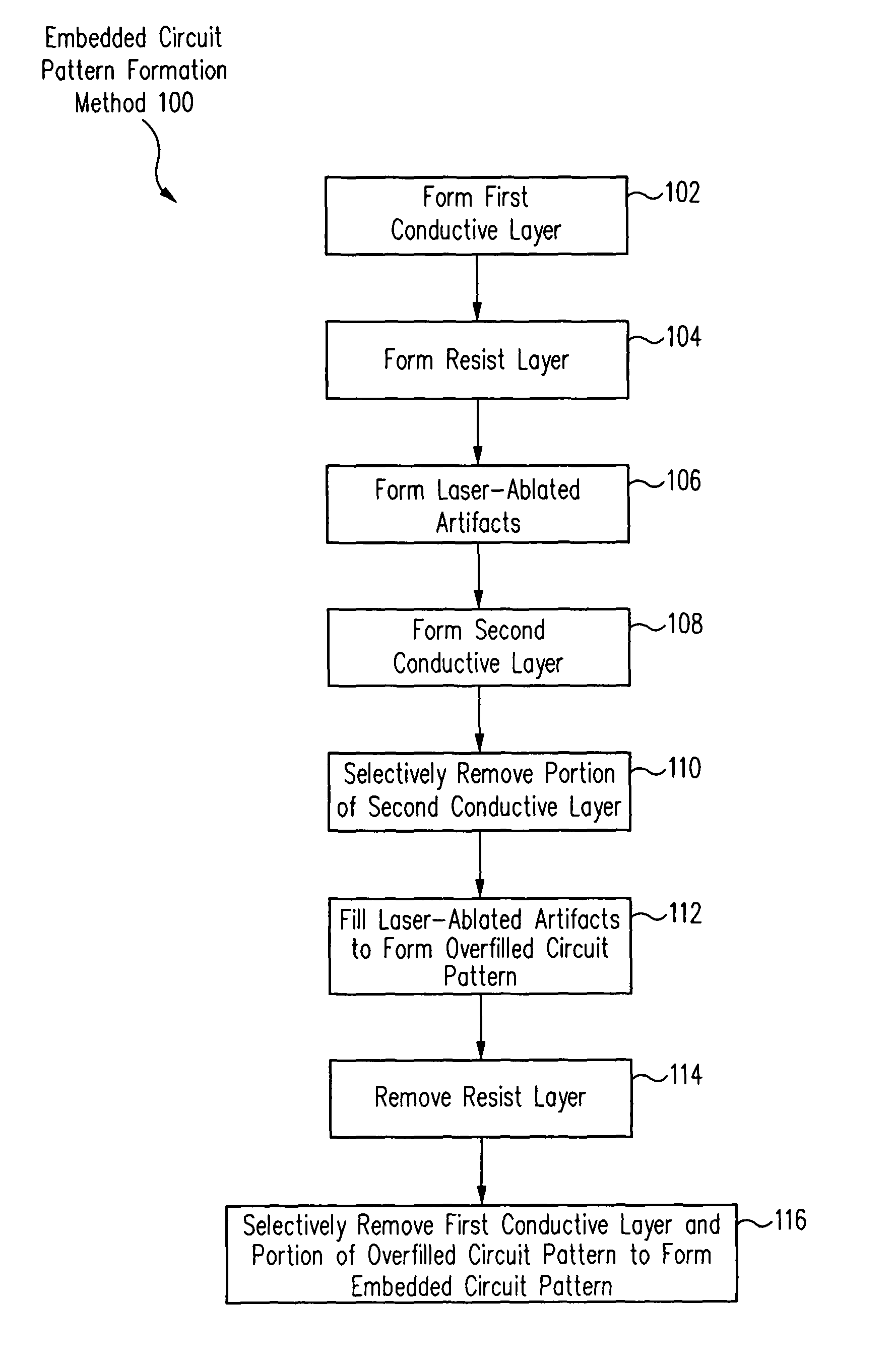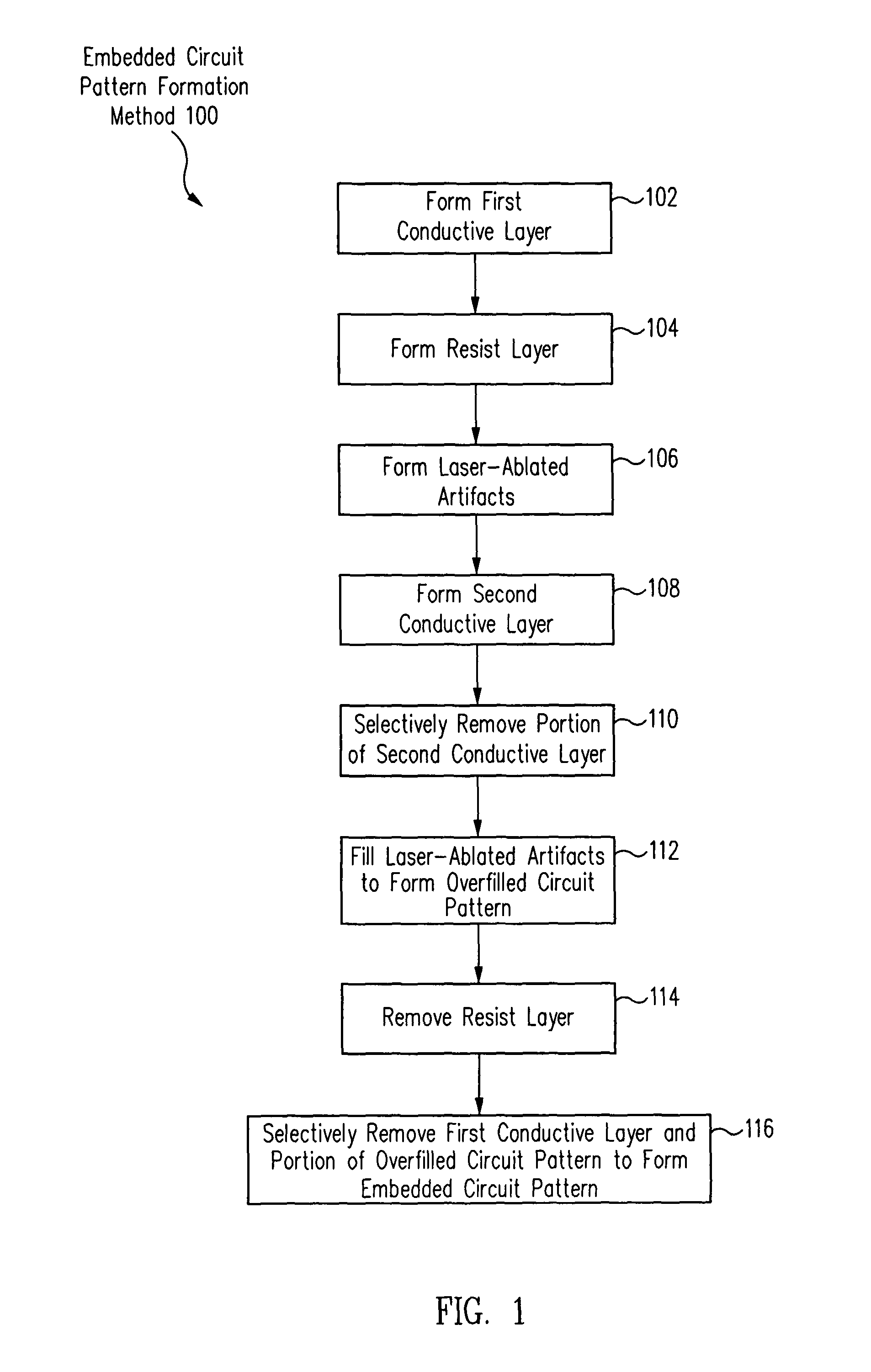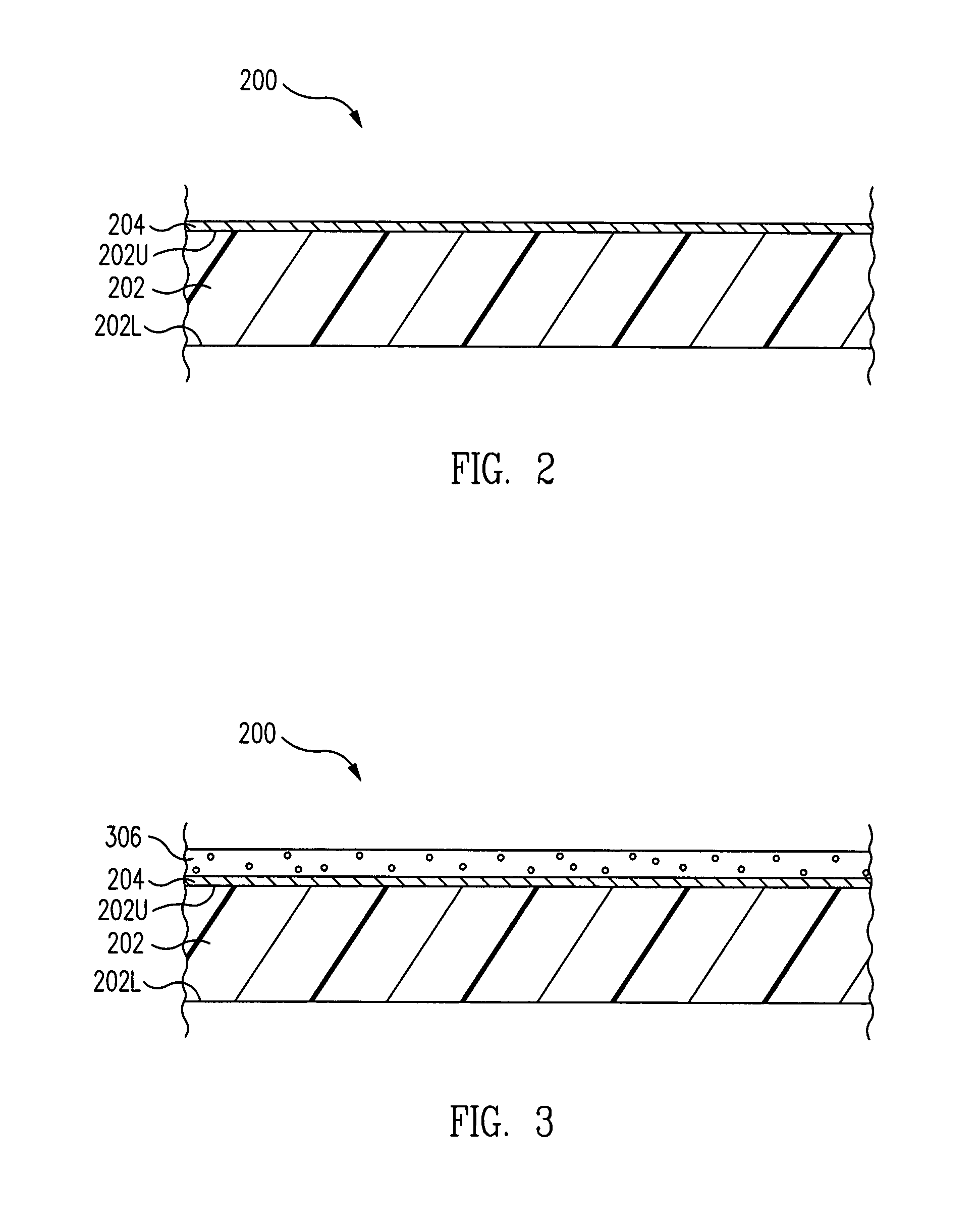Method of fabricating an embedded circuit pattern
a technology of embedded circuits and patterns, applied in the field of substrates, can solve the problems of inherently slow process and high associated cost, and achieve the effect of quick method and low cos
- Summary
- Abstract
- Description
- Claims
- Application Information
AI Technical Summary
Benefits of technology
Problems solved by technology
Method used
Image
Examples
Embodiment Construction
[0019]In accordance with one embodiment, referring to FIGS. 4 and 5 together, a method of fabricating a substrate 200 includes forming a first conductive layer 204 on a dielectric layer 202, forming a resist layer 306 on first conductive layer 204, and forming laser-ablated artifacts 408 through first resist layer 306, through first conductive layer 204, and at least partially into dielectric layer 202.
[0020]Referring to FIG. 6, a second conductive layer 626 is formed on resist layer 306 and within laser-ablated artifacts 408. Referring to FIG. 7, a portion of second conductive layer 626 is selectively removing such that second conductive layer 626 remains only within laser-ablated artifacts 408. Referring to FIG. 8, laser-ablated artifacts 408 are filled to form an overfilled circuit pattern 830.
[0021]Referring to FIGS. 8 and 9 together, resist layer 306 is removed. Referring to FIGS. 9 and 10 together, first conductive layer 204 is removed and a portion of overfilled circuit patte...
PUM
| Property | Measurement | Unit |
|---|---|---|
| conductive | aaaaa | aaaaa |
| electrically conductive | aaaaa | aaaaa |
| height | aaaaa | aaaaa |
Abstract
Description
Claims
Application Information
 Login to View More
Login to View More - R&D
- Intellectual Property
- Life Sciences
- Materials
- Tech Scout
- Unparalleled Data Quality
- Higher Quality Content
- 60% Fewer Hallucinations
Browse by: Latest US Patents, China's latest patents, Technical Efficacy Thesaurus, Application Domain, Technology Topic, Popular Technical Reports.
© 2025 PatSnap. All rights reserved.Legal|Privacy policy|Modern Slavery Act Transparency Statement|Sitemap|About US| Contact US: help@patsnap.com



